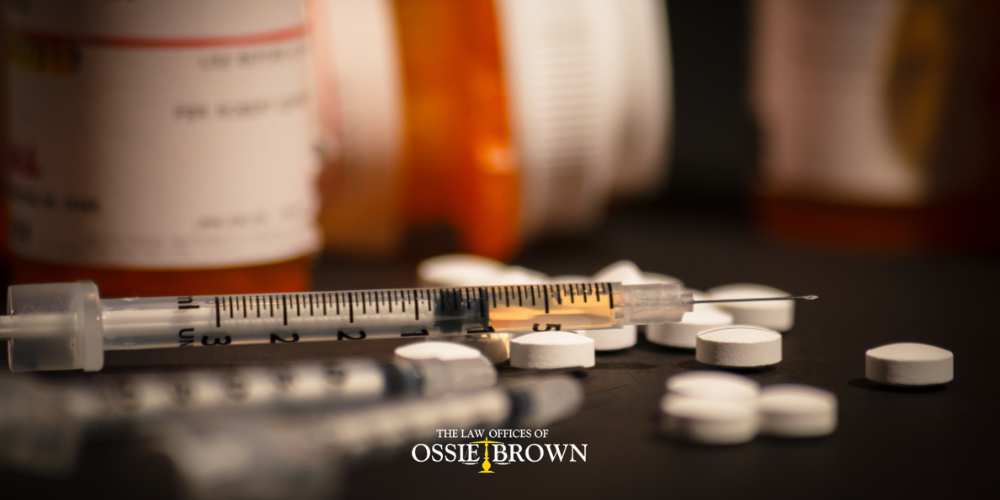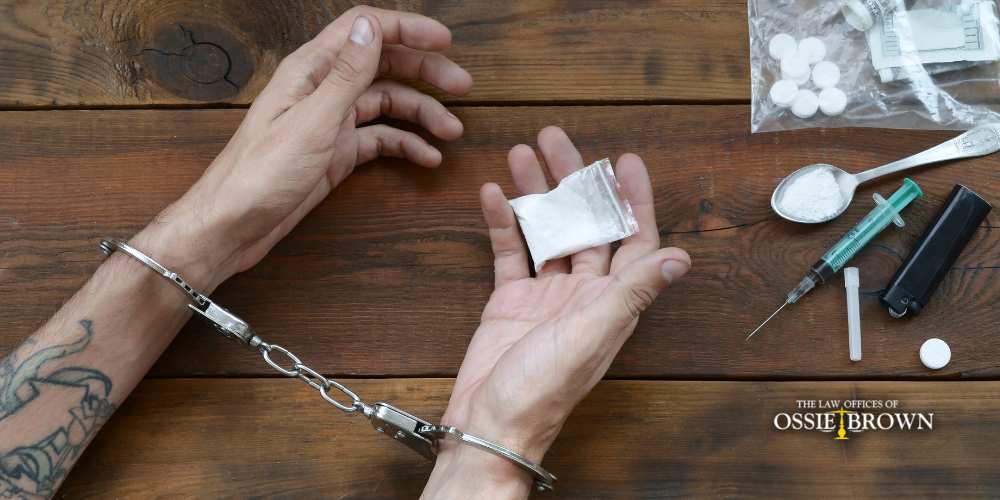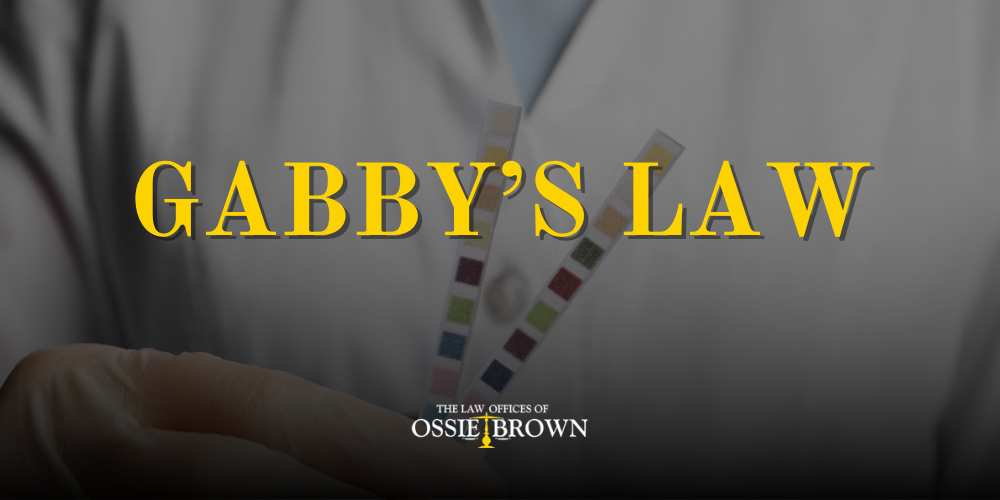Gabby’s Law, a recent Louisiana drug law aims to reduce the number of deaths related to illicitly manufactured fentanyl and other illegal drugs by imposing stricter penalties for manufacturers and sellers of fentanyl or illicit drugs laced with fentanyl. This law specifically aims to save lives by removing fentanyl test strips from the legal definition of drug paraphernalia. Below, our Baton Rouge fentanyl lawyers break down this law and what safety measures a person can take when they come in contact with this extremely dangerous substance.
Our Baton Rouge drug crime attorneys have decades of combined experience in helping Louisianans obtain the best possible case outcomes, whether that be dropped charges, reduced charges, or reduced fines and penalties. Call 225-343-1111 to schedule a free consultation at the Law Offices of Ossie Brown today.
What is Fentanyl?
Fentanyl is a synthetic opioid similar to morphine, codeine, and heroin. There are two main types of fentanyl: pharmaceutical fentanyl and fentanyl produced as illicit drugs.
The chemicals in legal opiates are designed to relieve chronic pain symptoms, typically as a treatment for cancer patients. Fentanyl is among the strongest types of synthetic opioids currently on the market for the pain treatment of cancer patients.
Meanwhile, illegally made fentanyl is responsible for the jump in overdosed victims. Fentanyl can be added to heroin, marijuana, Vicodin, cocaine, methamphetamine, or other prescription drugs to increase potency or euphoria. This is commonly the case with heroin and morphine, as they are both derived from raw opium. In fact, many unassuming buyers assume they’re purchasing heroin when they’re actually purchasing fentanyl.
The CDC estimates that fentanyl is up to 50 times more potent than heroin and 100 times more potent than morphine.
Very small amounts or in some cases, even contact with fentanyl or fentanyl mixed with heroin can lead to an overdose.
Why Do Law Enforcement Officers Wear Hazmat Suits When Handling Fentanyl But Not Other Illicit Drugs?
Law enforcement officers wear hazmat suits or specialized personal protective equipment (PPE) when handling fentanyl, unlike with other illicit drugs, due to fentanyl’s high potency and the severe risks of exposure. Fentanyl is a synthetic opioid significantly more potent than many other illicit drugs. Exposure can occur through inhalation, mucous membrane contact, ingestion, and skin contact, with the most concerning being inhalation and mucous membrane contact which can quickly lead to life-threatening respiratory depression.
These precautions are based on the unique and dangerous properties of fentanyl, which include the ability to be absorbed through the skin or inhaled as airborne particles, presenting a risk of rapid onset of overdose symptoms even from minimal contact.
Overdose Statistics: Fentanyl and Other Drugs

It’s widely known that drug overdoses rank as a prominent contributor to the mortality of American adults today. Based on information provided by the Centers for Disease Control and Prevention (CDC), there were 106,699 fatalities due to drug overdoses in 2021, and synthetic opioids such as fentanyl and heroin were responsible for over 75% of these cases.
Fentanyl Overdose in Louisiana
Regrettably, Louisiana has witnessed a surge in fentanyl deaths, resulting in thousands of fatalities caused by illicit drugs over recent years. According to a WAFB news report, from January to August 2023 alone, East Baton Rouge Parish reported 161 deaths attributed to fentanyl overdoses.
East Baton Rouge Sheriff Sid Gautreaux has revealed alarming statistics regarding the presence of fentanyl in the area. Since the beginning of 2022, the East Baton Rouge Narcotics Division has confiscated more than 20,000 counterfeit fentanyl pills and over 30 pounds of pure fentanyl. This quantity of potent drugs has the potential to fatally affect 150,000 individuals, which is double the capacity of a fully packed Tiger Stadium on a Saturday night.
Gabriella Nicole Hebert’s Story
19-year-old Gabriella Nicole Hebert from Kinder, Louisiana, tragically died from fentanyl overdose in March 2022.
Gabby’s parents, Judy Hebert and Jason Hebert, told a local news outlet that Gabby had struggled with drug use in the past. In 2021, after a scare, Gabby went to rehab and then moved to Mississippi for a fresh start in life.
Parents, Jason and Judy Hebert, say that when she returned home for a visit in March 2022, she looked healthy and rested, and she seemed like her old self. During this time, Gabby visited a friend in Lake Charles, where she took a pill laced with fentanyl. Her parents, Jason and Judy Hebert, say Gabby never woke up after taking the pill.
What is Gabby’s Law in Louisiana?
Gabby Hebert is the inspiration behind a new law in Louisiana, known as Gabby’s law, also known as House Bill 212. This bill received its formal name with help from Gabby’s uncle, Sheriff Hebert in Allen Parish. It took effect on August 1, 2022.
Gabby’s Law (HB 212) excludes fentanyl test strips, as well as other fentanyl testing equipment, from the definition of “drug paraphernalia.” Sheriff Hebert, as well as Jason Hebert and Judy Hebert, hope this new law can save children and young adults. Official lawmakers may not be able to stop drug addiction (especially overnight) but they can make it legal to determine what exactly they’re taking.
What Are Fentanyl Test Strips?
Fentanyl test strips (FTS) are a cheap and easy way to detect the presence of fentanyl in all sorts of illicit drugs in any form. The goal of these small strips is to hopefully reduce overdose deaths among users of these illicit drugs.
The United States government and the Substance Abuse and Mental Health Services Administration (SAMHSA) recently authorized federal funds to be used to purchase fentanyl test strips from secure websites and official websites, such as .gov websites, as public health tools.
How to Use Fentanyl Test Strips

In our current drug epidemic, it’s important for users of illicit drugs (and those who don’t use drugs) to purchase FTS in case the need to identify a specific substance arises. This is how to use the test strips correctly:
- Place at least 10mg of your drugs in a dry and clean container.
- Add half a teaspoon to one full teaspoon of water to the drugs and mix it together. Most drugs only require half a teaspoon of water, but methamphetamines may require a full teaspoon.
- Insert the wavy end of the test strip into the water and drug mixture for at least 15 seconds.
- Remove the test strip from the mixture and let it sit on a flat surface for 2 to 5 minutes.
- Read the results.
Positive results on test strips look like a single pink line on the left-hand side of the test strip. This means that fentanyl, or fentanyl analogs, are present in the drugs you tested. An “analog” refers to other drugs with a similar chemical structure or pharmacologic effect to fentanyl. If you get a positive test, it’s best to throw out the drugs you were planning to take, because you don’t know exactly how much fentanyl it’s laced with. Remember, even a small amount of this synthetic opioid could lead to death.
Negative results on test strips look like two pink lines. This means that fentanyl or fentanyl analogues have not been detected. Lastly, an invalid test looks like one pink line on the right-hand side or no lines at all. If you get invalid results, it’s best to retest the drugs with another test strip.
How to Reduce The Risk of Drug Overdose Deaths According to the MHSA and Official Government Organization Websites
Because relapse is often a part of alcohol and drug addiction, it’s important to employ harm reduction strategies. In other words, it’s important for drugs and other substances to be “safe” in that they don’t immediately lead to death if a person is to relapse.
Gabby’s law is one example of a harm reduction strategy that can save lives. Other strategies that can minimize the risk of drug overdoses include:
- Naloxone, also known as Narcan, is an FDA-approved medication that can be purchased without a prescription and can reverse synthetic opioid overdose by blocking or reversing the effects of fentanyl and other substances for 30 to 90 minutes.
- Don’t Mix Drugs: Whether you’re smoking, snorting, injecting, or swallowing pills, do not mix drugs together. Mixing meth and cocaine can be a deadly combination. Additionally, mixing alcohol with depressants such as opioids can also be fatal.
- Don’t Rely on Previous Experiences or Sources: You may have taken these exact drugs from this exact source before and survived, but that doesn’t guarantee you will have the same outcome again.
- Don’t Use Drugs Alone: There are countless stories of people taking a pill alone and never waking up because no one was there to help them during an accidental overdose, just like Gabby Hebert.
- Seek Help and Treatment: If you’re ready to break the cycle of drug addiction, call the National Helpline at 800-662-HELP (4357) or find local treatment options here.
Caught With Fentanyl Paraphernalia in Baton Rouge?

If you’re facing drug charges in the state of Louisiana, it’s crucial to hire aggressive legal representation from the Law Offices of Ossie Brown. In recent years, several new state laws have been passed that have even harsher penalties for certain types of drug crimes, especially those involving fentanyl. Our Baton Rouge drug crime lawyers can help form a strong defense against drug possession, drug distribution, and drug trafficking charges involving any type of illegal substance. Call 225-343-1111 to schedule a free consultation at our law firm today.


